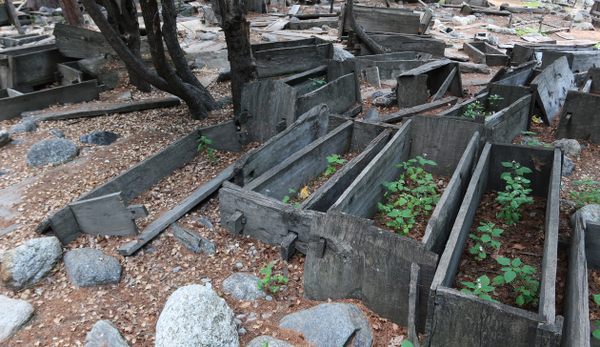The Kalasha Graveyard in Karakul offers a unique insight into the funerary practices and beliefs of the Kalasha people, an ethnic minority group residing in the remote valleys of Pakistan’s Hindu Kush mountains. This ancient burial ground, nestled in the picturesque Karakul Valley, stands as a testament to the Kalasha’s distinct cultural identity and their continued adherence to their religious beliefs, which incorporate animistic and proto-Hinduist elements.
Unlike conventional graveyards, the Kalasha burial site is characterized by its open-air layout and the use of wooden effigies known as gandau. These intricately carved figures, often representing the deceased, are placed atop graves and serve as memorials to honor the departed. The caskets are also adorned with carvings, usually consisting of circular geometrical patterns and stylized representations of the personal belongings of the deceased, reflecting the Kalasha belief in the continuity of life beyond death.
The open caskets are not simply a sign that these were unearthed and opened. In fact, the Kalasha funerary tradition dictates that the dead should be placed in open caskets, which should be left lying on the ground uncovered so that the dead would be exposed to the elements, which would facilitate their ascension to the spirit world and subsequent reincarnation. This practice is rooted in animism, but it is also reminiscent of the Tibetan practice of sky burial.
The Pakistani government put a halt to this practice due to hygiene and health concerns for the local communities. As a result of this development, the Kalasha now bury their dead. This cemetery offers a glimpse into one of the most exceptional traditions of the Kalasha people.

